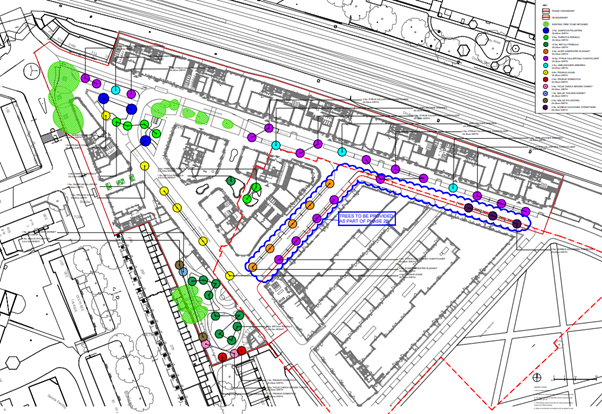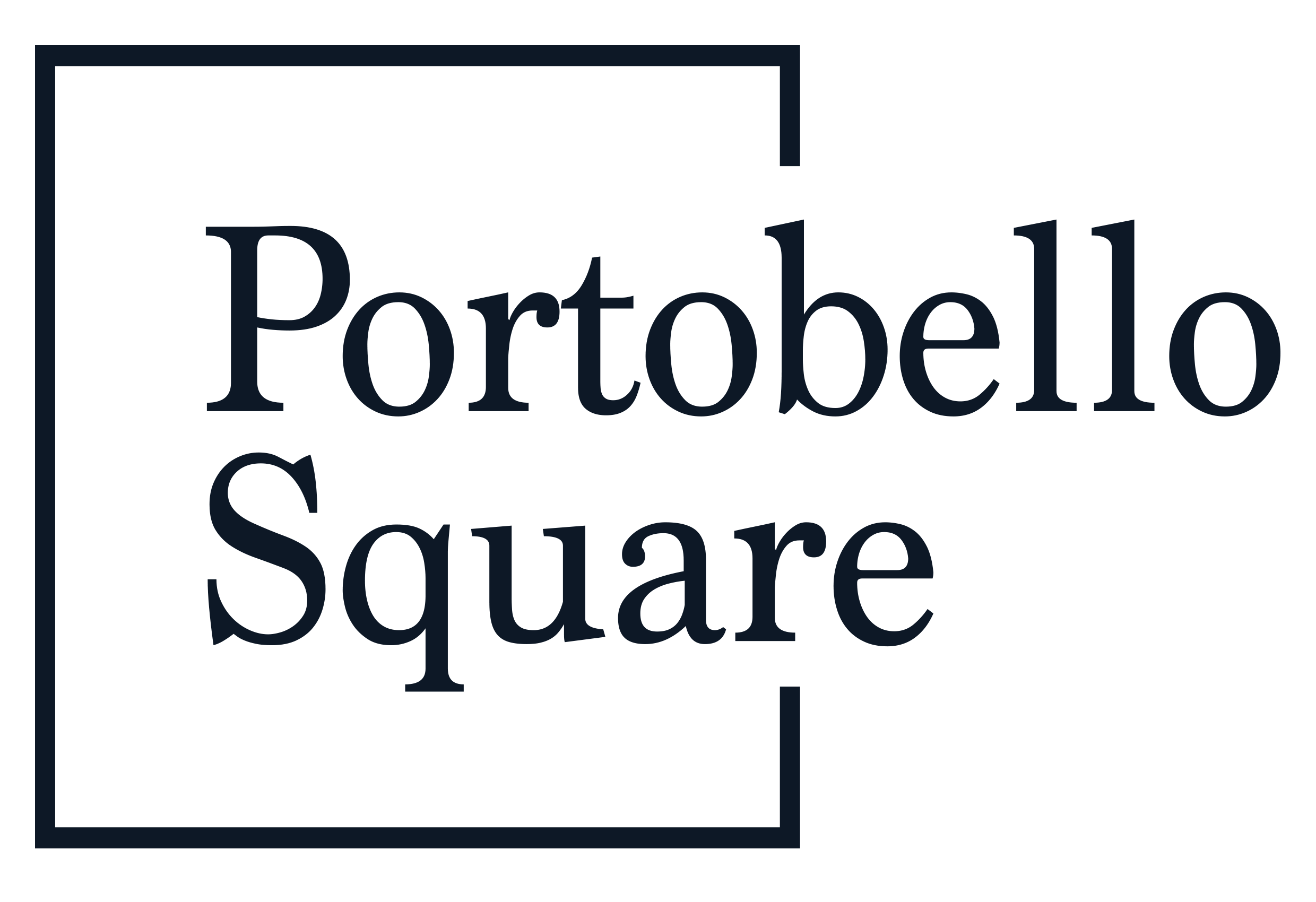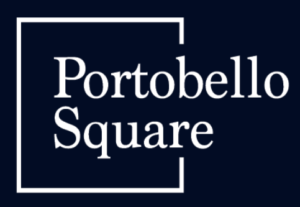- 62 new trees (13 to be delivered early as part of the phase 2B works)
- 43 more than the outline consent or 30 more than the outline consent if you exclude those 13 being delivered as part of phase 2B earlier works.
- Retain 12 mature London Plane trees – five more than in the 2010 outline consent
- Reconfiguration of the road provides opportunity to retain an additional tree, as well as increased soft landscaping and additional tree planting.
The majority of the new trees will be planted in the public realm and will eventually be adopted by the local council. We’ve been working closely with the Royal Borough of Kensington and Chelsea to ensure that we have an appropriate mix of species and ages that allow for better maintenance and a more bio-diverse and resilient local environment.
Phase 3 landscaping vision: the key objective
Our landscaping vision for Phase 3 has been established with three key objectives in mind:
- Encourage the local community to cycle, walk and use public transport in a friendly and safe environment
- Create a truly local, everyday space which welcomes all ages and groups
- Enhance biodiversity

Image showing changes to landscaping. Following the changes to road layouts we have increased the amount of public space by over 350 sqm and are able to retain 1 more tree adjacent to Barlby Roundabout.
Existing trees
We have recently updated our tree survey to understand how it compares with the original tree plan, established in 2010.
Since the original tree survey was carried out 10 years ago, some trees have had to be removed, while new ones have been planted. There are currently 44 trees on the Phase 3 site, compared to 48 outlined in the 2010 tree plan.
Trees strategy: Response to feedback
We are aware that there have been significant concerns raised during the recent Phase 2b works. We have listened to the feedback given by residents and neighbours and have taken the following steps as a result:
- We have carried out another tree survey to make sure that we have a full understanding of what is currently on the site.
- We have updated our plans to retain as many trees as possible. We have also committed to planting as many new trees as we can going forward.
- We have renewed our focus on retaining London Plane trees in particular.
- We are committed to sharing the Phase 3 landscape plans before and after the planning submission.
Updated tree strategy
As part of our new strategy, we have closely examined each tree to understand whether there was the potential to retain and preserve them.
Our proposals for Phase 3 will now see the removal of 31 existing trees on the estate, instead of the 41 we had initially planned to remove. We understand that people may feel strongly about the removal of any existing mature trees on this part of the estate.
We have actively sought new viable solutions for each tree on the estate. However, these 31 trees must be removed in order for this final phase to be completed. A diagram showing the location of trees we propose to retain and those we will remove is shown below along with a table comparing the 2010 consent to our current proposals.
Following the changes to road layouts we are able to keep 1 more tree adjacent to Barlby Roundabout.
| 2010 application | Current proposals | Change |
|---|---|---|
| 7 trees retained | 12 trees retained (all London Plane trees) | +5 trees retained |
| 19 new trees planted | 49 new trees planted | +30 new trees planted |
Key benefits
Our updated tree strategy brings with it several key benefits, including:
- Increasing species diversity within the area
- Ensuring a variation in age amongst the trees
- Providing an opportunity for better irrigation systems and rooting conditions
- Bringing forward a new layout which spreads the trees throughout streets and open spaces
- Providing other greening measures, including the installation of green roofs, brown roofs and rain gardens.
The tree planting strategy is based on a number of key objectives;
- Planting palettes will be chosen to respond to local character
- Provide a network of trees and green spaces
- Enhance wildlife habitats in this urban area
- Promote sustainable planting
- Improve local biodiversity through the selection of appropriate native species or species with a proven wildlife value.
- One-way vehicular system through the neighbourhood square. Reconfiguration of the road provides opportunity for additional tree retention, increased soft landscaping and additional tree planting.




